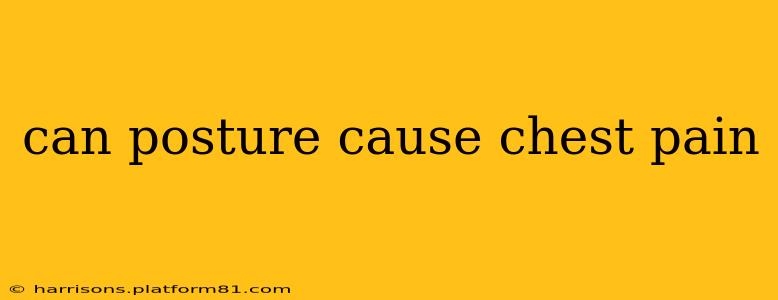Chest pain is a serious symptom that can stem from various sources, from heart conditions to muscle strain. While a heart attack is a crucial concern to rule out with any chest pain, it's important to understand that poor posture can also contribute to chest discomfort. This article explores the connection between posture and chest pain, addressing common questions and providing insights into how improving posture might alleviate this symptom.
What types of poor posture can lead to chest pain?
Several postural issues can indirectly cause or exacerbate chest pain. These include:
-
Forward head posture: This involves jutting the head forward, straining the neck and upper back muscles. The resulting muscle tension can radiate to the chest, causing tightness and pain. The strain on the neck can also impact the nerves that run through the chest, leading to referred pain.
-
Rounded shoulders: Slouching and hunching over, causing the shoulders to round forward, restricts breathing and puts pressure on the chest cavity. This can lead to chest tightness and pain, particularly in the upper chest region. It can also aggravate pre-existing conditions like costochondritis (inflammation of the cartilage connecting the ribs to the breastbone).
-
Kyphosis (hunchback): This is an excessive curvature of the upper spine, leading to a rounded upper back and shoulders. This posture can significantly restrict lung capacity and lead to chest pain due to muscle strain and restricted breathing.
-
Lordosis (swayback): An excessive inward curve of the lower back can also contribute to chest pain indirectly by altering the overall body alignment and putting strain on the muscles connecting the back and chest.
Can bad posture cause tightness in the chest?
Yes, absolutely. Bad posture restricts the movement of your rib cage and diaphragm. This restriction limits your lung capacity and can create a sensation of tightness in your chest. This tightness can be mistaken for more serious conditions, highlighting the importance of addressing postural issues. The constant muscle tension from maintaining poor posture contributes to this tightness and associated discomfort.
Can poor posture cause chest pain in the middle?
Middle chest pain associated with poor posture is often linked to muscle strain in the pectoral muscles (chest muscles) and surrounding tissues. Rounded shoulders and forward head posture put significant strain on these muscles, leading to pain and stiffness in the middle of the chest. This pain can be aggravated by activities that involve the chest muscles, such as lifting or pushing.
How do I know if my chest pain is related to posture?
Differentiating posture-related chest pain from other causes requires careful consideration. While posture-related chest pain is typically less severe and sharp than pain caused by a heart attack, it's crucial to seek medical attention if you experience:
- Sudden, sharp chest pain
- Chest pain accompanied by shortness of breath, dizziness, or nausea
- Chest pain that radiates to the arm, jaw, or back
- Chest pain that worsens with exertion
These symptoms could indicate a serious medical condition and require immediate medical evaluation. If your chest pain is more of a dull ache or tightness, particularly worsened by prolonged periods of poor posture and relieved by stretching or posture correction, it’s more likely to be posture-related.
How can I fix posture-related chest pain?
Addressing posture-related chest pain involves a multifaceted approach:
-
Postural correction exercises: Practicing exercises that strengthen the back and core muscles, improve posture, and increase flexibility can significantly alleviate chest pain. Examples include shoulder blade squeezes, chest stretches, and back extensions.
-
Stretching: Regular stretching of the chest, neck, and back muscles can release tension and improve mobility.
-
Ergonomic adjustments: Adjusting your workspace to promote good posture, including using ergonomic chairs, keyboard setups, and monitor placement, can minimize strain and prevent future chest pain.
-
Mindful posture awareness: Becoming more conscious of your posture throughout the day and actively correcting it when necessary is key to long-term improvement.
Disclaimer: This information is for general knowledge and does not constitute medical advice. If you experience chest pain, it's essential to seek professional medical evaluation to rule out any serious underlying conditions. A doctor or physical therapist can provide a proper diagnosis and develop a personalized treatment plan.
